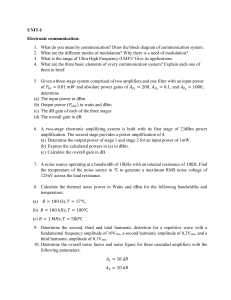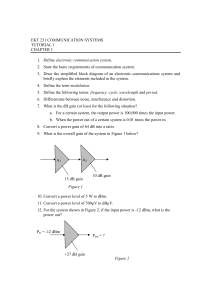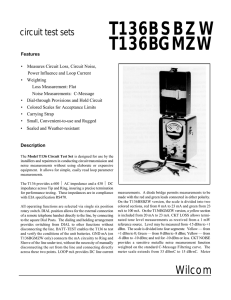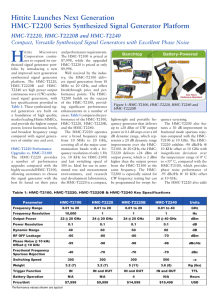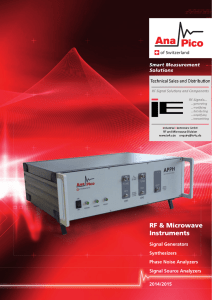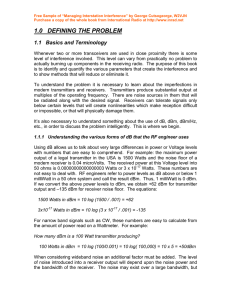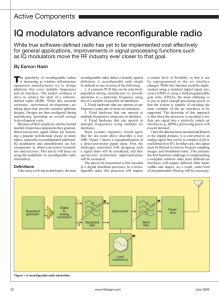UVLBI M #009 MASSACHUSETTS INSTITUTE OF TECHNOLOGY
advertisement
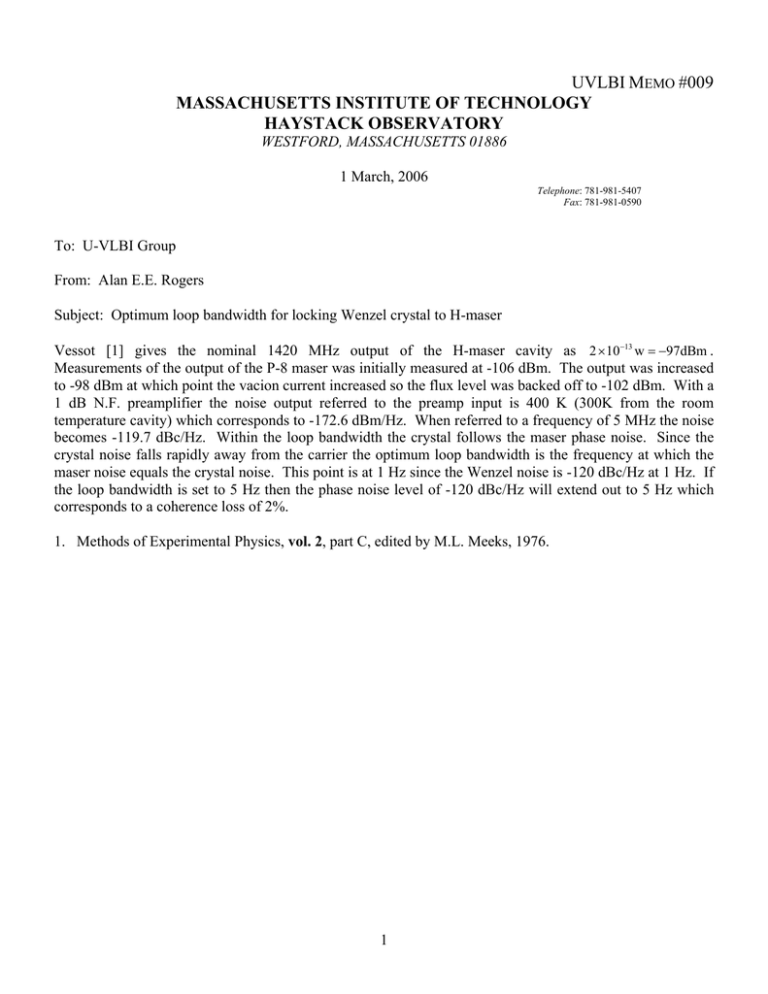
UVLBI MEMO #009 MASSACHUSETTS INSTITUTE OF TECHNOLOGY HAYSTACK OBSERVATORY WESTFORD, MASSACHUSETTS 01886 1 March, 2006 Telephone: 781-981-5407 Fax: 781-981-0590 To: U-VLBI Group From: Alan E.E. Rogers Subject: Optimum loop bandwidth for locking Wenzel crystal to H-maser Vessot [1] gives the nominal 1420 MHz output of the H-maser cavity as 2 × 10−13 w = −97dBm . Measurements of the output of the P-8 maser was initially measured at -106 dBm. The output was increased to -98 dBm at which point the vacion current increased so the flux level was backed off to -102 dBm. With a 1 dB N.F. preamplifier the noise output referred to the preamp input is 400 K (300K from the room temperature cavity) which corresponds to -172.6 dBm/Hz. When referred to a frequency of 5 MHz the noise becomes -119.7 dBc/Hz. Within the loop bandwidth the crystal follows the maser phase noise. Since the crystal noise falls rapidly away from the carrier the optimum loop bandwidth is the frequency at which the maser noise equals the crystal noise. This point is at 1 Hz since the Wenzel noise is -120 dBc/Hz at 1 Hz. If the loop bandwidth is set to 5 Hz then the phase noise level of -120 dBc/Hz will extend out to 5 Hz which corresponds to a coherence loss of 2%. 1. Methods of Experimental Physics, vol. 2, part C, edited by M.L. Meeks, 1976. 1




